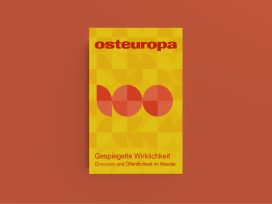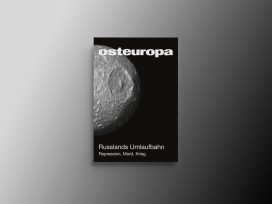Chernobyl: Legacy and obligations
“Never again!” This maxim is heard after every disaster unleashed by mankind. But Chernobyl is different. The tragedy that unfolded on the night of 26-27 April 1986 in the control centre of Block 4 of the Chernobyl nuclear power station, just 100 km north of the Ukrainian capital of Kiev, lends this commandment new meaning. For an entire generation of people living in the contaminated territories of Belarus, Ukraine, and Russia, this maxim runs through everyday life as a series of prohibitions: Never again set foot on this meadow; never again stroll through this forest; never again till this soil. Twenty years have passed since the greatest reactor accident in the history of man and it will take another ten years before half of the radioactive isotope Caesium 137 has decayed. Almost 150 000 sq. km of Belarus, Ukraine, and Russia – home to 7 million people at the time of the disaster – is contaminated.
These prohibitions, symbolized and made visible by the rusting warning signs that litter the deceptively idyllic landscape, are but one small aspect of the disaster. The accident’s medical, political, social, and culture effects are omnipresent. They have radically altered life in Ukraine but above all Belarus, where one-fifth of that country’s population lives in contaminated areas. At the same time, the consequences of this accident are hard to grasp. Since the end of the 1980s, the three Eastern Slavic states have undergone social changes so comprehensive that ascribing individual phenomena to the Chernobyl disaster is extremely difficult. This throws open the door to speculation and efforts to down play the disaster’s effects. One example is the claim that 40 people died in the accident. It is only possible to cling to such an assertion by holding the general social and economic collapse to account for the significant rise in cancer rates in Belarus and Ukraine, for the considerable increase in thyroid disorders, for the soaring rates of infant mortality and birth defects as well as all the other mental and physical illnesses that often appear at the same time and reinforce one another. That evidence of a connection between radiation exposure and these illnesses can be established is demonstrated by Sebastian Pflugbeil in this volume.
Life with all these health consequences leads to a sense of helplessness and resignation among the people living in the contaminated areas. Their quality of life has changed radically due to radioactive contamination and resettlement, as is recognized in the sensitive expose by Alfredo Pena-Vega in this issue. And as David Marples shows in this volume, these experiences have also left a mark on the relationship between the people directly affected by the disaster and the state: in Belarus, which was hardest hit by contamination from Chernobyl, the disaster’s omnipotence forms one of the psychological foundations for Alyaksandr Lukashenko’s authoritarian rule.
All of this constitutes Chernobyl’s legacy, which an army of hundreds of thousands of disaster relief workers could never “liquidate”, and which 20 years of “clean-up policy” could never overcome. At the same time, Chernobyl imposes on us obligations. “Have, acquire, produce, keep nothing that could allow you to make such mistakes!” In eastern Europe, this categorical imperative, formulated after Chernobyl by Ludger Lütkehaus following Günther Anders, applies above all to Russia. There, the heart of the Soviet nuclear industry continues to function. It appears, however, that Russia – where several of those responsible for the fatal policy of disinformation after the disaster of 26 April 1986 still occupy high office in industry – has failed to learn from Chernobyl. As Robert Darst, Jane Dawson, and Adam Stulberg show here, Russia, after the decline in importance of its military nuclear potential, now intends to establish its “civil” nuclear sector as a global player. This is dubious not only for ecological reasons.
The idea that there is a difference between civil and military nuclear power is simply wishful thinking. In technical terms, they are Siamese twins. Given that any state possessing the full nuclear fuel cycle for commercial purposes and the necessary know-how could build nuclear weapons within a few weeks, the spread of nuclear energy makes proliferation not a risk but an inevitability.
The alternatives to nuclear energy are plain to see. In all of eastern Europe, the potential for exploiting renewable energy is large. Tidal energy stations or wind parks on land or at sea could be commercially run if states would abandon the practice of giving systematic preference to nuclear power by providing investment subsidies. The potential for saving energy is of course much greater. Taken together, these options, as Felix C. Matthes argues here, refute the thesis that phasing out nuclear energy and reducing carbon dioxide emissions with the end of slowing global warming are irreconcilable. Recognizing this is the obligation imposed on us by Chernobyl.
In 1986, several villages in Belarus once again experienced a fate that had befallen them four decades earlier. In 1944, they were levelled by German troops. Forty years later, the directors of Soviet disaster management authorities had them buried, so as to prevent wind and water from spreading the high concentration of radionuclide that had fallen on them. This is only one of the many threads of responsibility that binds Germany to Belarus and Ukraine.
The International Centre for Education and Exchange [Internationale Bildungs- und Begegnungszentrum] in Dortmund ranks among the greatest supporters of the German-Belarusian partnership projects that emerged in the wake of the disaster. This organization also provided generous support in helping to make this volume possible.
Astrid Sahm, Manfred Sapper, Volker Weichsel
Published 7 April 2006
Original in German
First published by Osteuropa 4/2006
Contributed by Osteuropa © Osteuropa Eurozine
PDF/PRINTNewsletter
Subscribe to know what’s worth thinking about.



